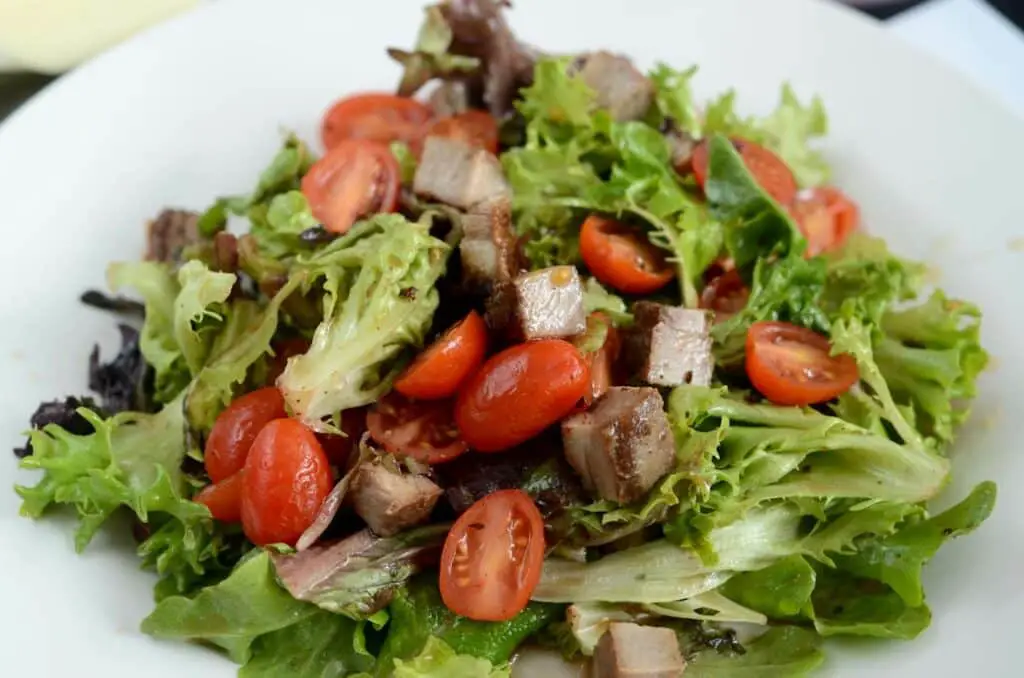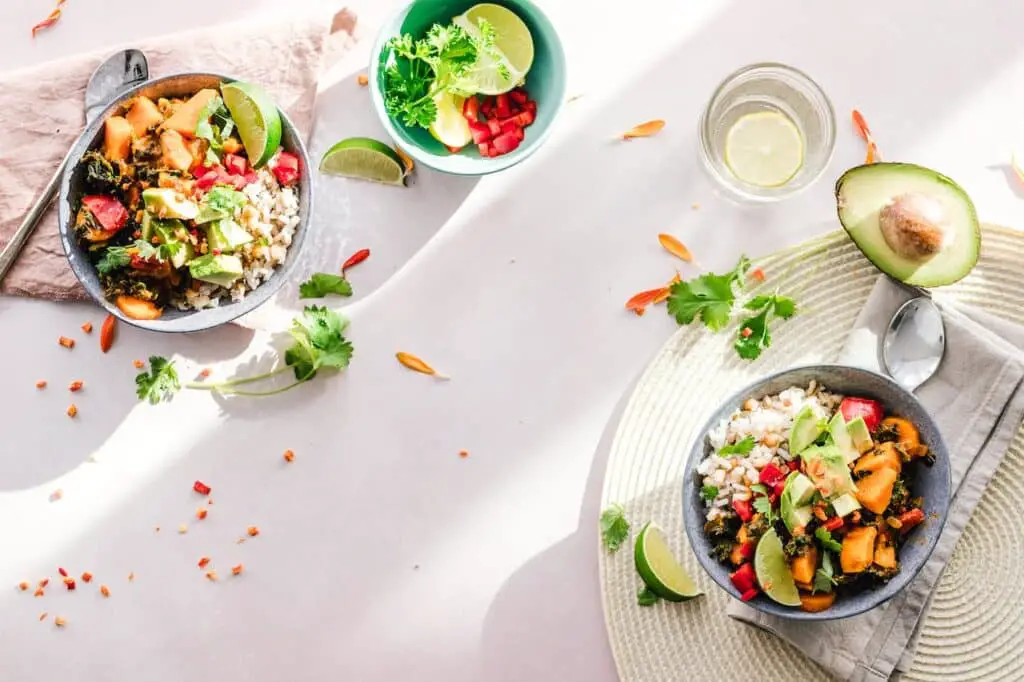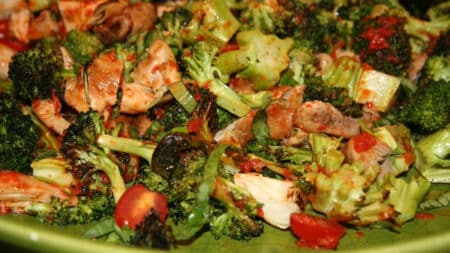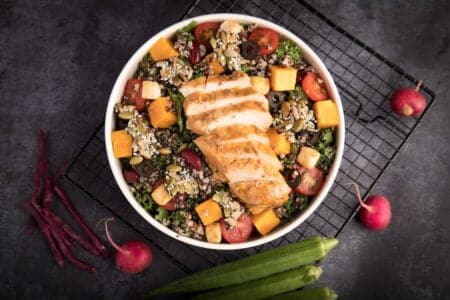I. Introduction
Salads are a cornerstone of a healthy diet, but often they leave us craving more. Fear not! By incorporating a thoughtful selection of ingredients and following these steps, you can transform your salads into truly satisfying and filling meals that don’t compromise on health.
II. Choose Nutrient-Dense Greens
A. Opt for Dark Leafy Greens
When crafting a hearty salad, start with a solid foundation of nutrient-dense greens. Consider kale, spinach, or arugula – these not only add robust flavor but also provide essential vitamins and minerals.
B. Discuss Nutritional Benefits
Explore the nutritional benefits of these greens, such as high levels of iron, calcium, and antioxidants. Understanding the health perks makes the salad experience more rewarding.
C. Ideas for Incorporation
Provide ideas for incorporating a variety of greens to keep salads exciting. Mix and match to find your preferred combination for both flavor and nutritional diversity.
Ingredient Table:
| Greens | Benefits |
|---|---|
| Kale | High in iron and fiber |
| Spinach | Rich in vitamins A and K |
| Arugula | Adds a peppery kick |
III. Add Protein-Packed Ingredients
A. Explore Different Protein Sources
To make your salad more filling, introduce protein-packed ingredients. Grilled chicken, tofu, chickpeas, or black beans are excellent choices. Proteins increase satiety and make the salad a satisfying meal.
B. Highlight Protein’s Role
Discuss the importance of protein in promoting fullness and muscle maintenance. This step is crucial for those looking to make salads a substantial part of their meals.
C. Creative Ways to Include Protein
Provide creative ways to incorporate protein. Think beyond traditional grilled chicken – consider marinated tofu, quinoa, or even edamame for a plant-powered protein boost.
Ingredient Table:
| Proteins | Benefits |
|---|---|
| Grilled Chicken | Lean protein, aids muscle growth |
| Tofu | Plant-based protein powerhouse |
| Black Beans | Fiber-rich and heart-healthy |
IV. Incorporate Healthy Fats
A. Discuss the Importance of Healthy Fats
Healthy fats play a crucial role in making salads more satisfying. Avocados, nuts, and olive oil not only add flavor but also contribute to a feeling of fullness.
B. Recommend Healthy Fat Sources
Explore the benefits of avocados, nuts, and olive oil. These ingredients provide monounsaturated fats, which are heart-healthy and contribute to a creamy and indulgent salad experience.
C. Tips on Balancing Fats
Provide tips on balancing fats in the salad. While healthy fats are beneficial, portion control is key. Strike a balance for flavor without overloading on calories.
Ingredient Table:
| Healthy Fats | Benefits |
|---|---|
| Avocados | Creamy texture, rich in monounsaturated fats |
| Nuts (e.g., almonds, walnuts) | Crunchy and heart-healthy |
| Olive Oil | Adds richness and healthy fats |
V. Include Complex Carbohydrates

A. Introduce Whole Grains
To make salads more filling, incorporate complex carbohydrates. Whole grains like quinoa, farro, or brown rice add substance and contribute to sustained energy.
B. Benefits of Complex Carbs
Explain the benefits of complex carbohydrates, such as providing a steady release of energy and contributing to the overall heartiness of the salad.
C. Ideas for Adding Complex Carbs
Offer ideas for adding a variety of complex carbs to salads. Experiment with different grains to find the combination that suits your taste and dietary preferences.
Ingredient Table:
| Complex Carbs | Benefits |
|---|---|
| Quinoa | Complete protein source, rich in fiber |
| Farro | Hearty and chewy texture |
| Brown Rice | Nutrient-rich and filling |
VI. Enhance Flavor with Fresh Herbs and Spices
A. Emphasize the Role of Flavor
Flavor plays a pivotal role in making salads enjoyable. Fresh herbs and spices elevate the taste profile, turning a basic salad into a culinary delight.
B. Recommend Fresh Herbs and Spices
Recommend using fresh herbs like basil, cilantro, or mint, along with spices such as cumin, coriander, or paprika. These additions provide a burst of flavor without added calories.
C. List of Complementary Herbs and Spices
Provide a list of herbs and spices that complement salads. Encourage experimentation to find your preferred flavor combinations.
Ingredient Table:
| Herbs and Spices | Benefits |
|---|---|
| Basil | Fresh and aromatic |
| Cumin | Warm and earthy |
| Coriander | Citrusy and adds depth |
Stay tuned for the second part of this article, where we’ll delve into the remaining points, including experimenting with texture, utilizing satisfying dressings, and incorporating sweet and savory elements.
VII. Experiment with Texture
A. Importance of Texture
Highlight the significance of texture in creating a satisfying salad experience. A mix of textures, such as crunchiness from nuts or croutons, adds a dynamic element to each bite.
B. Suggest Crunchy Elements
Encourage the inclusion of crunchy elements like nuts, seeds, or homemade croutons. These not only enhance the texture but also contribute to the overall enjoyment of the salad.
C. Incorporating a Mix of Textures
Emphasize the need for a diverse texture profile. A combination of crispy, chewy, and tender components makes the salad more interesting and enjoyable.
Ingredient Table:
| Texture Elements | Benefits |
|---|---|
| Nuts (e.g., almonds, walnuts) | Crunchy and heart-healthy |
| Seeds (e.g., sunflower seeds, pumpkin seeds) | Nutrient-rich and add crunch |
| Homemade Croutons | Crispy and customizable |
VIII. Utilize Satisfying Dressings

A. Explore Homemade Dressing Options
Homemade dressings not only elevate the flavor but also allow for healthier choices. Explore various homemade dressing options to enhance the overall satisfaction of the salad.
B. Balance of Flavors
Discuss the importance of achieving a balance of flavors in dressings. Incorporating ingredients like balsamic vinegar, Dijon mustard, or honey adds depth and complexity to the dressing.
C. Simple Recipes for Delicious Dressings
Provide simple recipes for delicious and satisfying dressings. From classic vinaigrettes to creamy yogurt-based dressings, offer options that cater to various taste preferences.
Ingredient Table:
| Dressing Ingredients | Benefits |
|---|---|
| Balsamic Vinegar | Tangy and adds depth |
| Dijon Mustard | Sharp flavor, aids in emulsification |
| Greek Yogurt | Creamy texture, adds protein |
IX. Combine Sweet and Savory Elements
A. Highlight the Appeal of Sweet and Savory
Explore the delightful world of combining sweet and savory elements in salads. The interplay of flavors adds a unique and enjoyable dimension to the overall dining experience.
B. Adding Fruits or Dried Fruits
Recommend adding fruits or dried fruits for a touch of sweetness. Options like sliced strawberries, dried cranberries, or apple chunks complement savory ingredients beautifully.
C. Successful Sweet and Savory Pairings
Provide examples of successful sweet and savory pairings. The juxtaposition of ingredients like feta cheese with watermelon or prosciutto with figs creates a harmonious balance.
Ingredient Table:
| Sweet Elements | Benefits |
|---|---|
| Sliced Strawberries | Juicy sweetness, high in vitamin C |
| Dried Cranberries | Chewy and adds a sweet-tart flavor |
| Apple Chunks | Crisp and naturally sweet |
X. Portion Control and Mindful Eating
A. Importance of Portion Control
Discuss the importance of portion control for a balanced meal. While creating a hearty salad, it’s essential to be mindful of portion sizes to maintain a well-rounded diet.
B. Encourage Mindful Eating
Encourage mindful eating practices to enhance satisfaction. Pay attention to hunger cues, savor each bite, and enjoy the sensory experience of the meal.
C. Tips on Listening to Hunger Cues
Provide practical tips on listening to hunger cues. Eating slowly, putting down utensils between bites, and assessing fullness contribute to a mindful and satisfying meal.
XI. Conclusion
Summarize the key points on making salads more filling and satisfying. Emphasize the versatility and creativity in crafting salads that cater to diverse preferences.






